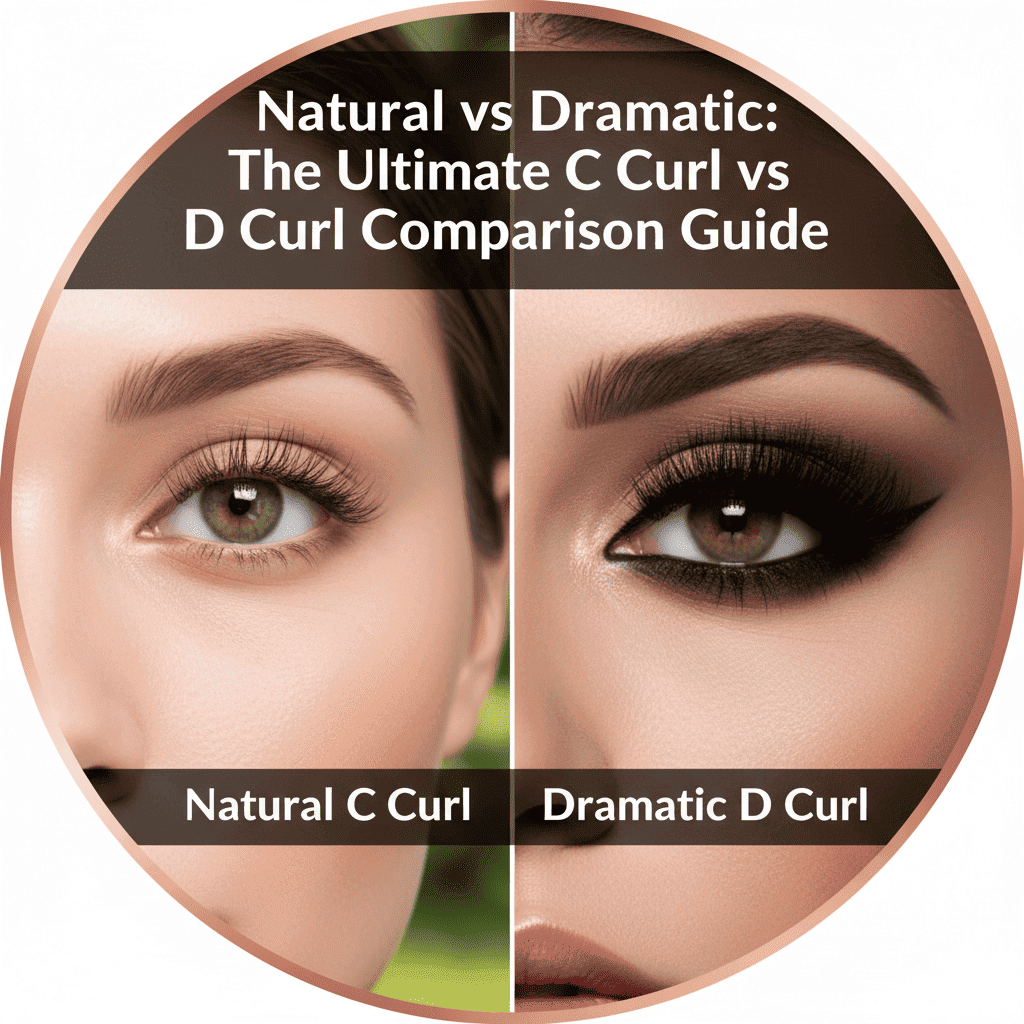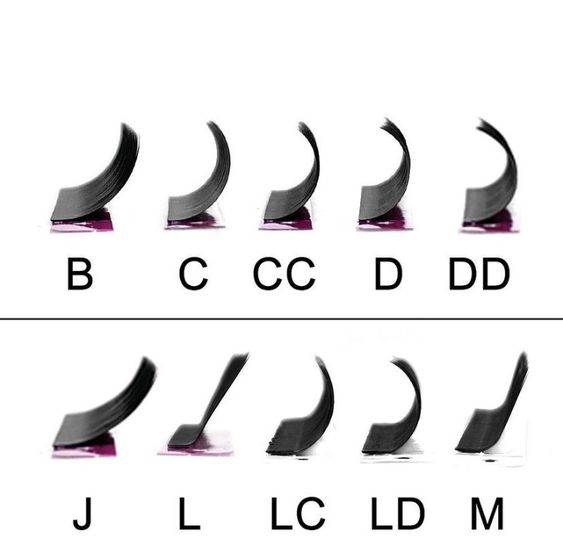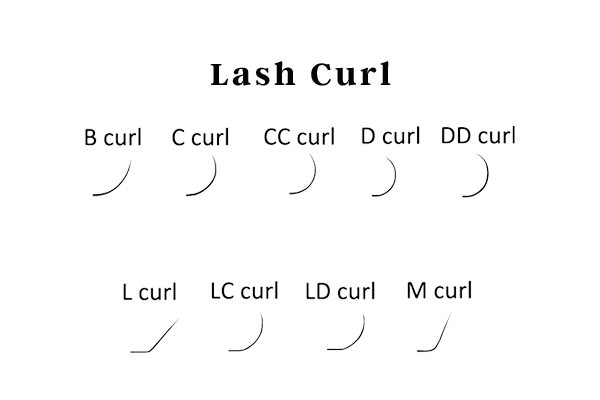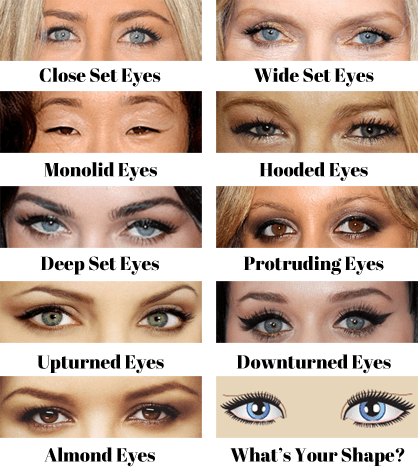Choosing the wrong lash curl can ruin a client’s entire look. This common mistake costs technicians valuable time and disappoints clients who expected beautiful results.
The right eyelash extension curl depends on your eye shape, desired look, and natural lash characteristics – B curl for natural enhancement, C curl for noticeable lift, and D curl for dramatic transformation. Each curl serves specific purposes and clients.
Understanding these differences can transform your lash services. Let me guide you through each curl type and help you choose perfectly.
What Are the Main Differences Between B, C, and D Curl Lashes?
Clients often choose curls based on trends rather than what actually suits them. This leads to dissatisfaction and repeat corrections.
B curl lashes offer a gentle 45-degree curve for natural enhancement, C curls provide 55-degree noticeable lift, while D curls deliver 65-degree dramatic curl for maximum eye-opening effect. Each targets different aesthetic goals.
Detailed Curl Comparison Table
| Feature | B Curl | C Curl | D Curl |
|---|---|---|---|
| Curve Degree | 45° | 55° | 65° |
| Appearance | Natural & Subtle | Noticeable Lift | Dramatic & Bold |
| Best Eye Shapes | Almond, Round | Most Shapes | Monolid, Hooded |
| Ideal Clients | First-timers, Professionals | Regular Users | Glam Enthusiasts |
| Daily Wear | Very Comfortable | Comfortable | May Feel Heavy |
B curl lashes create the most natural-looking enhancement because their gentle curve closely mimics natural lash growth patterns. They’re perfect for clients who want subtle improvement without obvious artificiality. At UBLash, we recommend B curls for corporate clients and first-time users who need gradual adaptation to lash extensions. C curls provide more visible lift and are the most popular choice among regular lash clients. They work well for most eye shapes and offer balanced enhancement that’s noticeable but not overwhelming. D curls deliver maximum drama with their steep 65-degree curve. They’re ideal for special occasions or clients with monolids who need significant lift to create visible lid space. The key is matching curl intensity to both the client’s natural features and their lifestyle needs.
How Do You Determine Which Curl Works Best for Different Eye Shapes?
Using the same curl for every client creates cookie-cutter results that don’t enhance individual beauty. Customization is essential for satisfaction.
Match B curls to almond and round eyes for natural enhancement, C curls work for most shapes including hooded eyes, while D curls best suit monolid and deep-set eyes needing dramatic lift. Proper matching enhances natural features.
Eye Shape Compatibility Guide
| Eye Shape | Recommended Curl | Why It Works | Alternative Options |
|---|---|---|---|
| Almond Eyes | B Curl | Complements natural shape | C Curl for more drama |
| Round Eyes | B or C Curl | Adds elongation | D Curl for special events |
| Hooded Eyes | C Curl | Creates lid visibility | Mix with D Curl outer corners |
| Monolid Eyes | D Curl | Maximum lift needed | C Curl for subtler look |
| Deep-Set Eyes | C Curl | Balances prominence | B Curl for natural enhancement |
Almond-shaped eyes have natural elegance that B curls enhance beautifully without altering their perfect proportions. Round eyes benefit from B or C curls that create slight elongation, making eyes appear more oval. Hooded eyes need C curls to lift lashes above the hood, creating visible lid space that makes eyes look more open. Monolid eyes require the strongest curl – D curls provide the dramatic lift needed to define the eye shape effectively. Deep-set eyes can handle C curls that balance their natural prominence without overwhelming the facial features. At UBLash, we always assess each client’s eye shape during consultation. We consider not just the shape but also the client’s natural lash strength, as weaker lashes may not support heavier curls. This personalized approach ensures every client receives lashes that enhance rather than fight their natural beauty.
What Are the Practical Application Differences Between These Three Curls?
Application techniques vary significantly between curl types. Using the wrong method can damage natural lashes and compromise results.
Apply B curls with gentle placement following natural growth, C curls require precise 90-degree attachment, and D curls need careful isolation to prevent excessive tension on natural lashes. Technique affects both appearance and lash health.
Application Techniques Comparison
| Curl Type | Placement Angle | Adhesive Amount | Isolation Needs | Common Challenges |
|---|---|---|---|---|
| B Curl | Follow natural growth | Moderate | Standard | Maintaining natural appearance |
| C Curl | 90-degree lift | Slightly more | Careful | Avoiding tension on lids |
| D Curl | Maximum lift | Controlled amount | Meticulous | Preventing heavy feel |
B curl application is the most straightforward because the gentle curve aligns well with natural lash direction. Technicians can place them with minimal adjustment, making them ideal for beginners. C curls require more precision – they need to be attached at a perfect 90-degree angle to the eyelid to achieve their characteristic lift. This demands steady hands and good isolation skills. D curl application is the most challenging due to the extreme angle. They require meticulous isolation to ensure each natural lash can support the dramatic curl without stress. At UBLash, we train technicians to use lighter adhesive amounts with D curls to prevent heaviness that could cause discomfort. The application time also varies – B curls typically apply fastest, while D curls require the most time and patience. Understanding these differences helps technicians schedule appointments appropriately and set realistic client expectations.
How Do Client Preferences and Lifestyle Factors Influence Curl Choice?
Ignoring client lifestyle leads to beautiful lashes that don’t work in real life. Practical considerations matter as much as aesthetics.
Consider client’s daily activities, makeup habits, and maintenance commitment – B curls for low-maintenance professionals, C curls for balanced lifestyles, D curls for clients willing to invest time in upkeep. Lifestyle compatibility ensures long-term satisfaction.
Lifestyle Compatibility Analysis
| Lifestyle Factor | Recommended Curl | Reasoning | Maintenance Level |
|---|---|---|---|
| Corporate Professional | B Curl | Subtle, appropriate | Low maintenance |
| Active Lifestyle | B or C Curl | Comfortable wear | Moderate care |
| Makeup Enthusiast | C or D Curl | Complements bold looks | Higher maintenance |
| First-time User | B Curl | Gentle introduction | Easy learning curve |
| Special Events Focus | D Curl | Maximum impact | Intensive upkeep |
Corporate professionals often prefer B curls because they provide enhancement without drawing excessive attention in professional settings. The natural appearance aligns with conservative workplace aesthetics. Clients with active lifestyles need curls that withstand movement and sweating – B and C curls typically hold up better than dramatic D curls during physical activities. Makeup enthusiasts who regularly wear eye makeup often choose C or D curls as they provide better visibility and complement dramatic eye looks. First-time clients should start with B curls to ease into lash extensions comfortably. At UBLash, we’ve found that clients committed to regular maintenance appointments can successfully wear D curls, while those with irregular schedules fare better with B or C curls that are more forgiving between fills. The client’s willingness to follow aftercare instructions significantly influences which curl will work best for them long-term.
What Are the Retention and Maintenance Differences Between These Curls?
Different curls have varying longevity and care requirements. Unrealistic expectations lead to client disappointment and technician frustration.
B curls typically have best retention due to natural alignment, C curls maintain well with proper care, while D curls may need more frequent fills due to their extreme angle putting more stress on natural lashes. Retention varies with application quality and aftercare.
Retention and Maintenance Comparison
| Curl Type | Average Retention | Fill Frequency | Aftercare Requirements | Common Issues |
|---|---|---|---|---|
| B Curl | 3-4 weeks | Every 3 weeks | Basic brushing & cleansing | Minimal issues |
| C Curl | 2-3 weeks | Every 2-3 weeks | Regular maintenance | Occasional twisting |
| D Curl | 2 weeks | Every 2 weeks | Intensive care | Higher shedding risk |
B curls enjoy excellent retention because their gentle curve aligns with natural lash growth, reducing stress on the hair follicle. Clients can typically go 3-4 weeks between fills with proper care. C curls have good retention when applied correctly, usually lasting 2-3 weeks before needing attention. They may occasionally twist or lose shape if not maintained properly. D curls have the shortest retention period due to their extreme angle, which puts more tension on natural lashes. They often require fills every 2 weeks to maintain their dramatic appearance. At UBLash, we educate clients that curl intensity directly affects maintenance needs. D curl wearers need to be especially diligent with aftercare, including daily brushing and avoiding oil-based products near the eyes. The investment in time and maintenance appointments should factor into the client’s decision-making process. Proper education during consultation prevents misunderstandings about long-term commitment.
How Can You Mix Different Curls for Customized Results?
Using only one curl type limits creative possibilities. Strategic mixing creates customized enhancements that pure curls cannot achieve.
Mix B curls for natural inner corners, C curls for middle eye emphasis, and D curls for dramatic outer corners to create customized looks that enhance specific eye features. Blending curls maximizes enhancement potential.
Customized Curl Mixing Strategies
| Mixing Approach | Curl Combination | Best For | Application Technique |
|---|---|---|---|
| Natural to Dramatic | B + C + D | Graduated enhancement | Progressively increase curl |
| Focus Areas | C main + D corners | Eye opening | Strategic placement |
| Subtle Variation | B + C mix | Dimension | Alternating pattern |
| Special Effects | D accents | Glam looks | Targeted application |
Mixing curls1 allows technicians to create truly customized results that address specific client needs. The most common approach uses B curls on the inner corners for soft, natural entry points, C curls through the middle section for balanced lift, and D curls on the outer corners to create dramatic sweep and elongation. This graduated approach works beautifully for clients who want enhancement without uniformity. Another effective strategy uses C curls as the base with strategic D curl placements to highlight specific areas needing more lift. At UBLash, we often mix curls for clients with uneven eye shapes or specific enhancement goals. The key is maintaining balance – too many dramatic curls can look artificial, while too many natural curls may not provide enough enhancement. Mixing requires advanced technical skill2 but delivers superior results that pure curl applications cannot match. This approach demonstrates true artistry and builds client loyalty through personalized service.
Conclusion
Choosing between B, C, and D curls depends on eye shape, lifestyle, and desired look – each offers unique benefits for different clients and occasions.

Fanny
Lash Technician
Hi, I’m Fanny, the author of this post.
Over the past 5 years, we have assisted numerous lash salons and technicians across 20 countries to build their lash brand and grow their businesses with high-quality lash extension products.
If you have any questions or need assistance, feel free to reach out for a free consultation or to discuss tailored solutions for your business needs.
More Interesting Posts
Bulk Lash Extension Purchasing: MOQ Negotiation & Volume Discounts

Natural vs Dramatic: The Ultimate C Curl vs D Curl Comparison Guide

B Curl vs C Curl vs D Curl: Which Eyelash Extension Curl is Right for Your Eye Shape?








